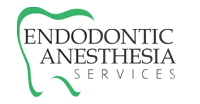USE A MAYO CART WITH AN AUTOMATIC ELECTRONIC DEFIBRULLATOR
Posted November 13, 2016 by J. Tim Russin, DDS, PA
Automatic Electronic Defibrillators (AED’s) are proven lifesavers in cardiac arrest. One issue that exists with these devices is that their “stick on” patient pads that attach to the patient have connected wires to the AED that are usually quite short so that the pad and wire can be stored
inside the AED’s cover enclosure, plugged in and read to go. Truly a great design, works well…as long as the patient is typically laying on the ground during the actual cardiac arrest with the AED also on the ground next to the patient.
The problem with this design in a dental setting is that if a patient sitting or lying in a dental chair may ever go into cardiac arrest, the AED’s wires are simply not long enough for the AED to be placed on a nearby cabinet top, floor or hanging off an adjacent wall mount/pole with the pads attached to the patient.
Placing the AED on the patient’s abdomen during an arrest will easily slide off especially when performing CPR and will only get tangled in ECG, BP, ETCO2, SPO2, IV lines and Velcro straps.
Solve this problem by purchasing a “Mayo Instrument Stand” (i.e. Southern Anesthesia and Surgical Supply, Columbia, SC ser#39101, $126.19)to position the AED close to and adjacent to the patient during use. The short wired connections between the AED/patient are easily “snugged up” close to the patient and adjustable especially with other equipment/Staff in the room.
Most importantly, the device is easily seen and the operation and readouts of the AED during an arrest are close by, clearly visible, heard and controlled. The Mayo stand also doubles as a storage device for the AED when not in use. I include on the table the actual AED, hair shaving tools for the AED pad adhesion
including an electric shaver with backup batteries, a manual “Bic” shaver, a pair of scissors to open up clothing quickly, extra pediatric pads and of course, and simple written instructions in case a “non-professional” (the janitor-off hours) may ever have to use it. The AED unit can be stored next to a busy area to listen for any battery chirp warnings, and wheeled out to the hallway next to an adjacent operatory during an
anesthesia case, a restroom, reception area, etc. for quick access if ever needed. Store it in a consistent place so everybody knows where it is if needed. -JTR
inside the AED’s cover enclosure, plugged in and read to go. Truly a great design, works well…as long as the patient is typically laying on the ground during the actual cardiac arrest with the AED also on the ground next to the patient.
The problem with this design in a dental setting is that if a patient sitting or lying in a dental chair may ever go into cardiac arrest, the AED’s wires are simply not long enough for the AED to be placed on a nearby cabinet top, floor or hanging off an adjacent wall mount/pole with the pads attached to the patient.
Placing the AED on the patient’s abdomen during an arrest will easily slide off especially when performing CPR and will only get tangled in ECG, BP, ETCO2, SPO2, IV lines and Velcro straps.
Solve this problem by purchasing a “Mayo Instrument Stand” (i.e. Southern Anesthesia and Surgical Supply, Columbia, SC ser#39101, $126.19)to position the AED close to and adjacent to the patient during use. The short wired connections between the AED/patient are easily “snugged up” close to the patient and adjustable especially with other equipment/Staff in the room.
Most importantly, the device is easily seen and the operation and readouts of the AED during an arrest are close by, clearly visible, heard and controlled. The Mayo stand also doubles as a storage device for the AED when not in use. I include on the table the actual AED, hair shaving tools for the AED pad adhesion
including an electric shaver with backup batteries, a manual “Bic” shaver, a pair of scissors to open up clothing quickly, extra pediatric pads and of course, and simple written instructions in case a “non-professional” (the janitor-off hours) may ever have to use it. The AED unit can be stored next to a busy area to listen for any battery chirp warnings, and wheeled out to the hallway next to an adjacent operatory during an
anesthesia case, a restroom, reception area, etc. for quick access if ever needed. Store it in a consistent place so everybody knows where it is if needed. -JTR







